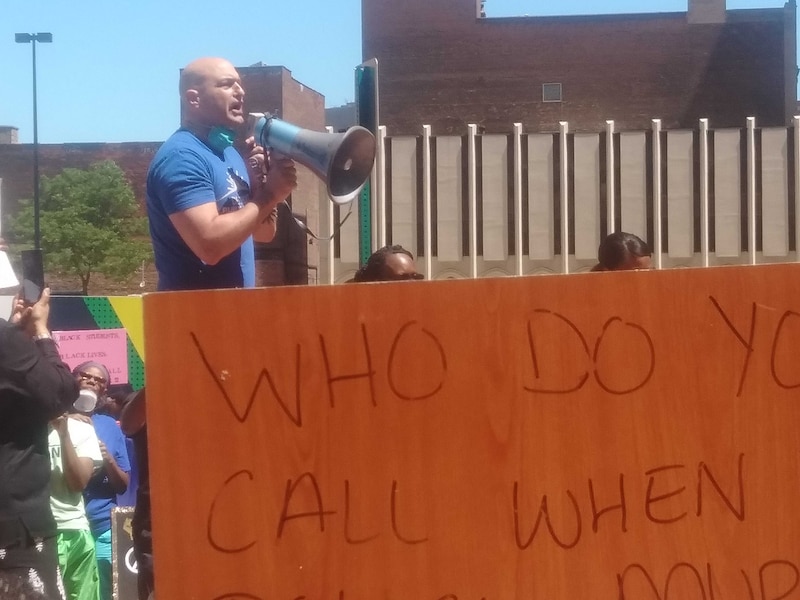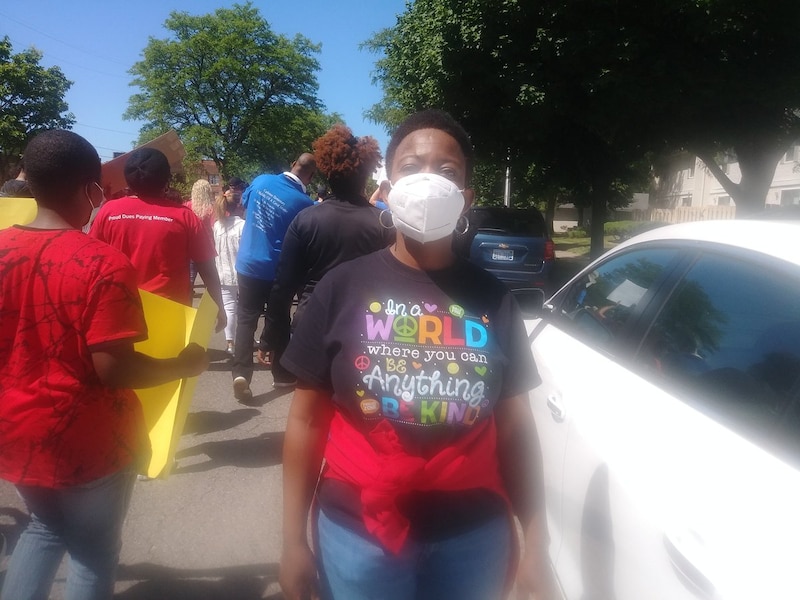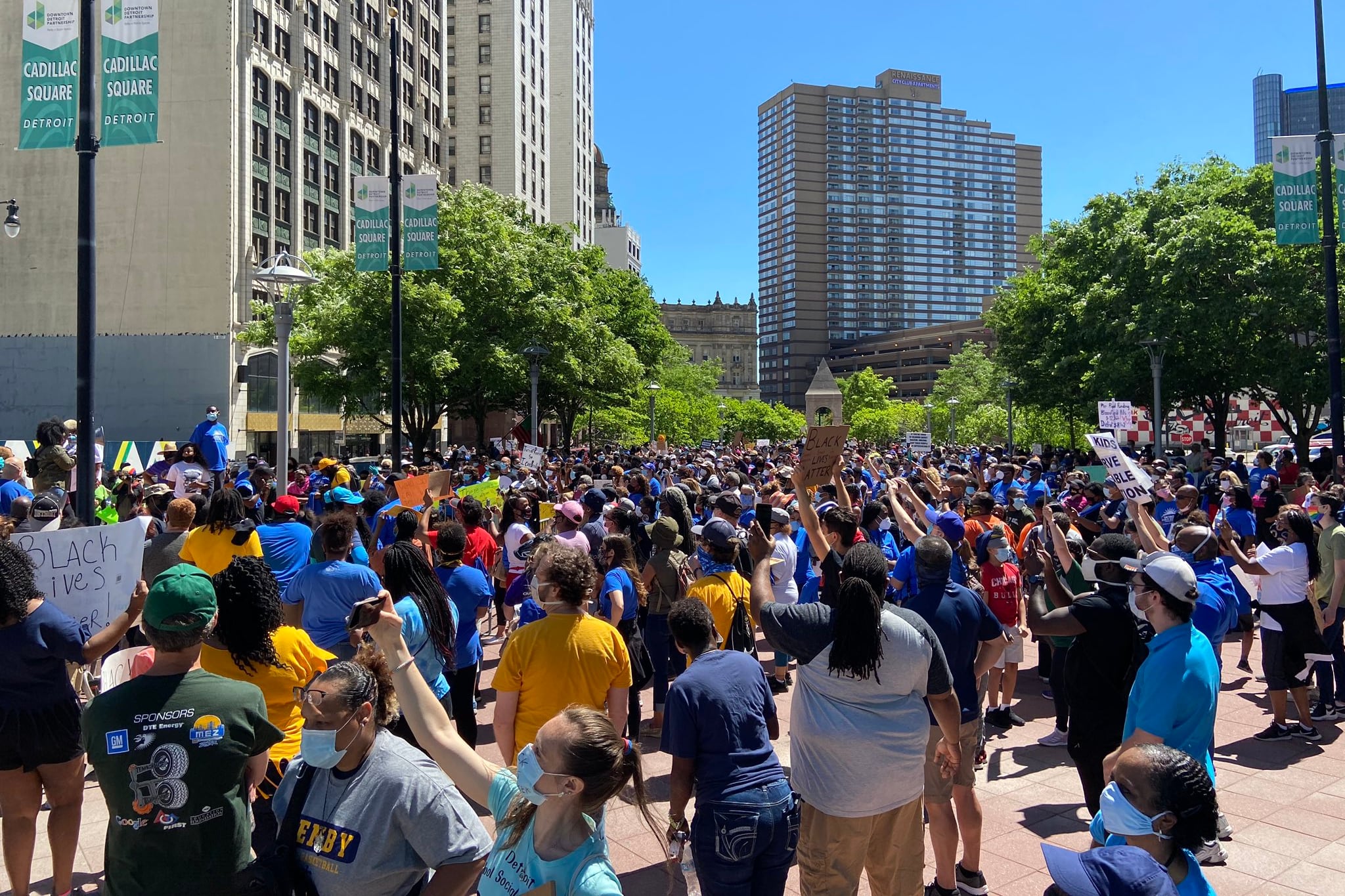Hundreds marched in Detroit Thursday to spread a message: Michigan can prove that Black lives matter by equitably funding Detroit schools.
“We want the same education as Grosse Pointe has, and we won’t stop until we get it,” Ridgeley Hudson, a member of the district-wide student council, told a crowd of educators and students, referring to a wealthy suburban district that neighbors Detroit.
The Detroit school district held the peace protest to draw attention to K-12 funding inequities. Thursday also marked the 14th straight day of Black Lives Matter protests in metro Detroit following the death of George Floyd, a Black man killed by a white police officer.
Districts that receive less money from the state often serve more children of color. The Detroit district receives $8,142 per student per year from its state foundation grant, while Bloomfield Hills, a wealthy suburb of Detroit, receives $12,354, even though Detroit enrolls a higher proportion of students who need extra support. District leaders said they haven’t ruled out a lawsuit over the state’s school funding system.
While federal funds help Detroit make up some of the funding gap, that money comes with strings attached, and it isn’t enough to overcome years of disinvestment in school facilities. Many schools in Detroit lack air conditioning and windows that open, and the Detroit Public Schools Community District has no way to pay for nearly $1 billion in urgent repairs.

The district — along with many education leaders statewide — has been pushing the state to rethink the way it finances schools. The “right to read” lawsuit, which wrapped up this week, was part of that effort.
“If you talk about Black Lives Matter in education, it’s not about equality, it’s about equity,” said Detroit Superintendent Nikolai Vitti at the protest, speaking into a megaphone. “Our kids don’t need the same. Our kids need more.”
He added: “I stand before you as the father of Black children … and as the superintendent for almost 50,000 Black and brown children.”
Starting around 11 a.m., participants, many of them wearing T-shirts representing the district’s roughly 100 schools, walked from King High School to Campus Martius downtown.
District police cars cleared traffic for marchers, most of whom wore masks, although many stood within six feet of one another despite the district’s promise that social distancing would be enforced.

The crowd held Black Lives Matter signs and chanted “Education, equality,” “Say their names — which ones?” and the district’s slogan, “Students rise, we all rise.”
The coronavirus pandemic has magnified the disadvantages faced by Detroit students, said Jenifer Loher, a third-grade teacher at Burton International Academy.
Many of her students didn’t have the technology they needed to learn from home while school buildings were closed.
“I look around at other communities in the area and all the other students have the resources they need for their students,” she said. “I need to speak up for our students, because they matter.”
Clora Smith, a first-grade teacher at Greenfield Union, said she wants her students to understand what’s going on in the world.
“I am a teacher of young boys of color. This is a peaceful way to show we care. Our goal is to move forward.”
For policymakers looking for ways to rectify racial injustice, overheated Detroit school buildings are a good place to start, said Janet Cannon, a math teacher coach for the district.
“It’s as simple as central air,” she said. “The buildings are very old.”
Sydney Matthews, a paraeducator at Greenfield Union, said it’s disheartening to see the lack of financial backing in the school district. Her school building has roaches.
“Children should not have to worry to make sure they’re not running into the bug traps. That should be a place where it’s clean, where it’s safe. For it not to be that way is a very huge problem,” she said.
Madeleine Battey, an 11th-grade math teacher at Mumford High School, said she wants more high-quality technology for her students.
“I want our school to have true 21st-century education. That’s the biggest thing for us right now.”
Amanda Dechter, a second-grade teacher at Greenfield Union, wants greater investments in emotional support for her students.
“We need counseling, mental health resources. Our students are experiencing trauma after trauma after trauma,” she said.







